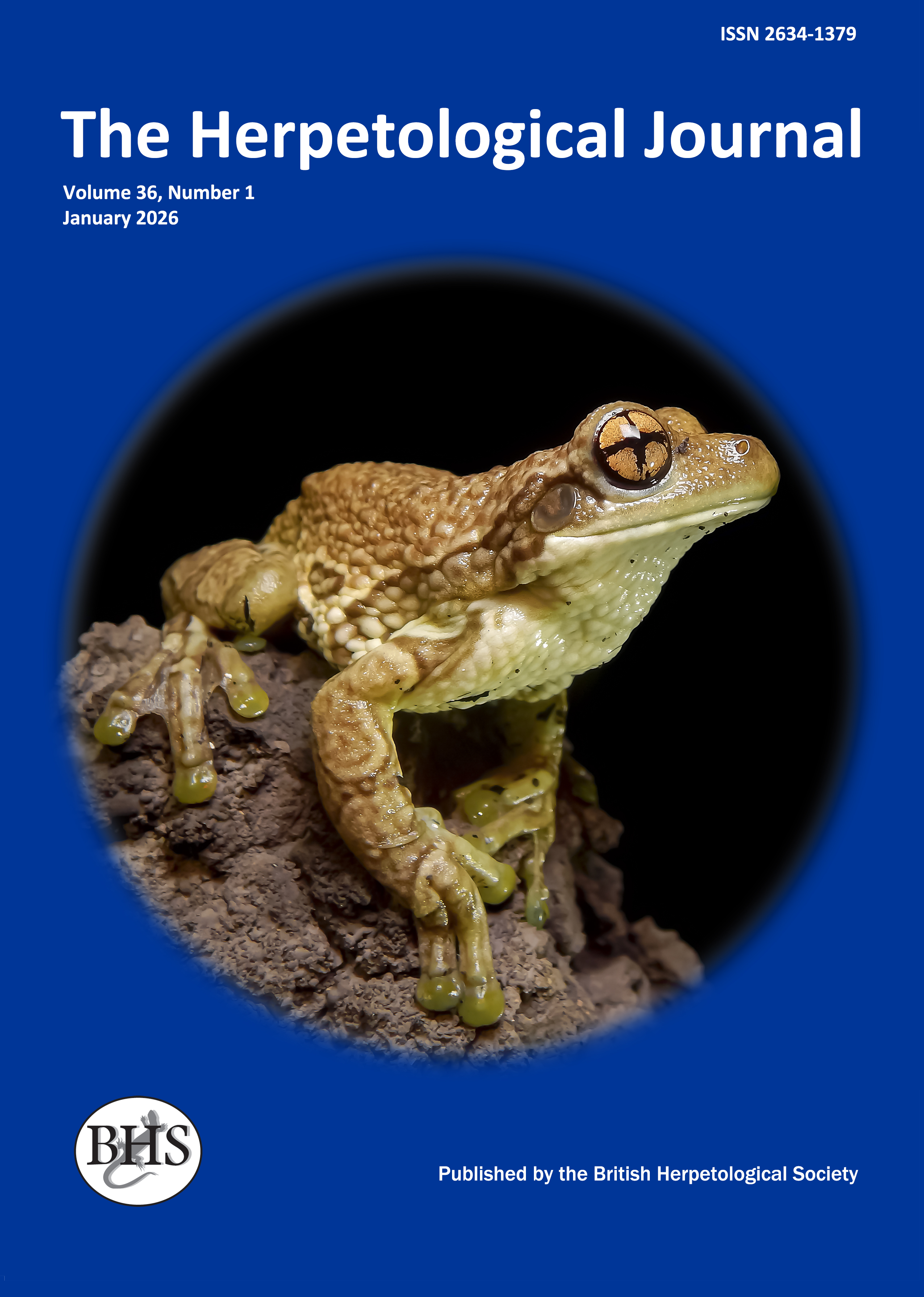
The Herpetological Journal
The Herpetological Journal is the Society's prestigious quarterly scientific journal. Articles are listed in Biological Abstracts, Current Awareness in Biological Sciences,Current Contents, Science Citation Index, and Zoological Record.
ISSN 0268-0130
2023 Impact Factor for the Herpetological Journal is 1.1, with the Journal sitting just below Quartile 2 in Zoology, at percentile 46.9
pdf 02. The effects of competition on pre- and post-metamorphic phenotypes in the common frog
2081 downloads
Open Access
pp. 187-195
Authors: Stamper, C.E.; Stevens, D.J.; Downie, J.R. & Monaghan, P.
Abstract: Many species express different phenotypes when reared under different environmental conditions. However, few studies have considered the possible post-metamorphic effects associated with the induction of particular larval phenotypes in organisms which undergo metamorphosis. In this study, we manipulated both larval density and food availability to create the conditions likely to induce high and low competition morphs in the common frog Rana temporaria and examined the resulting pre- and post-metamorphic phenotypes. Tadpoles reared in a high competition environment took longer to reach metamorphosis, were smaller in terms of both mass and total length and possessed relatively narrow bodies and mouths and short, narrow tails compared to low competition tadpoles. Competition level also influenced swimming ability with high competition tadpoles swimming slower and less far than low competition tadpoles. The effects of high levels of larval competition persisted through metamorphosis; high competition froglets were initially shorter and lighter than those reared under a lower level of competition. In addition, froglets reared under a high level of competition as larvae developed relatively short femurs. However, differences in froglet morphology did not significantly affect performance. These results suggest that factors influencing the phenotype in the larval stage will also have post-metamorphic fitness consequences through influences on post-metamorphic morphology.
Keywords: LIFE HISTORY, DEVELOPMENTAL TRADE-OFFS, RANA TEMPORARIA, SWIMMING ABILITY, PHENOTYPIC PLASTICITY

